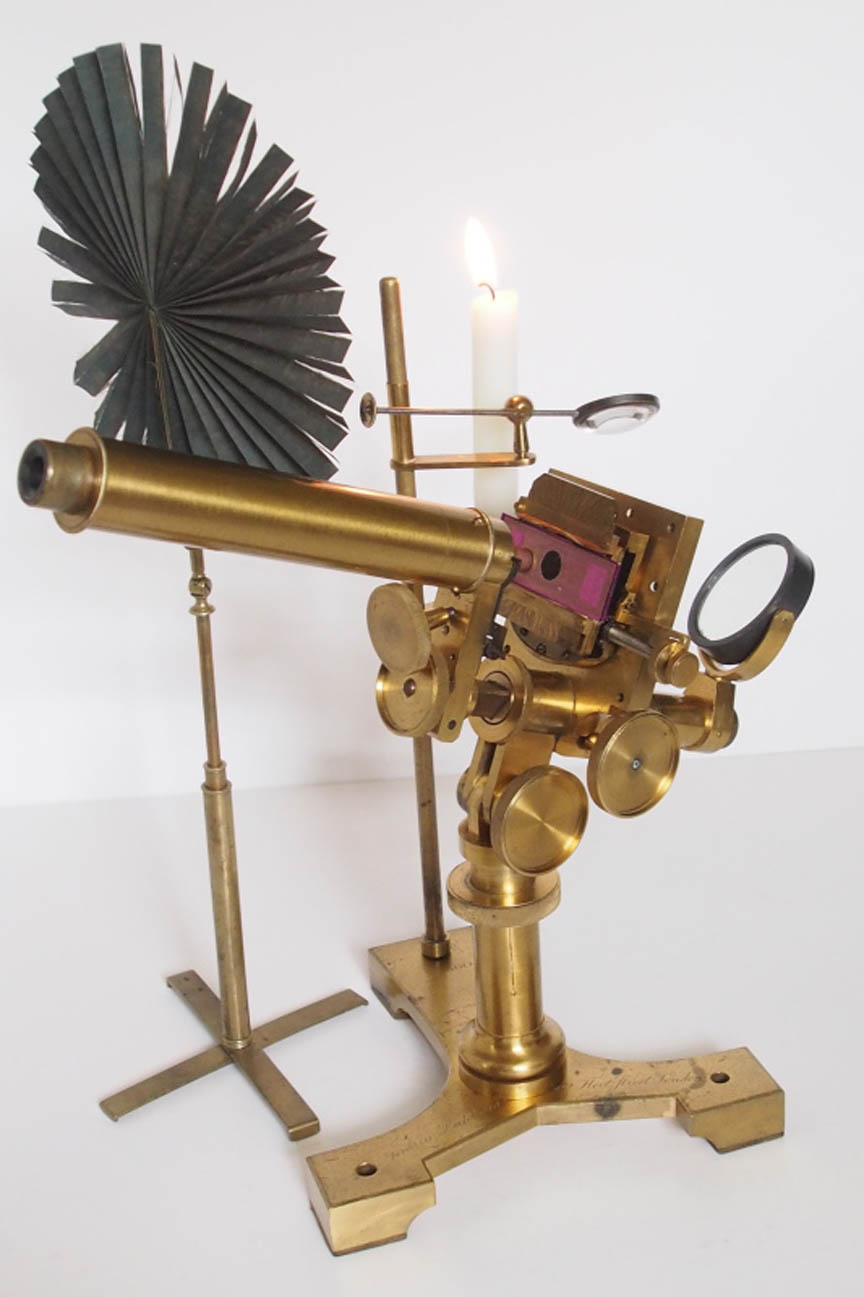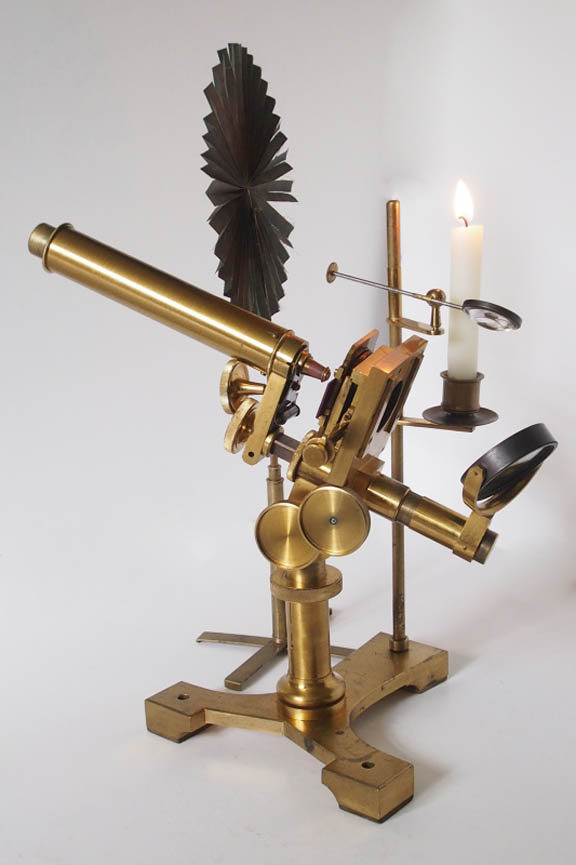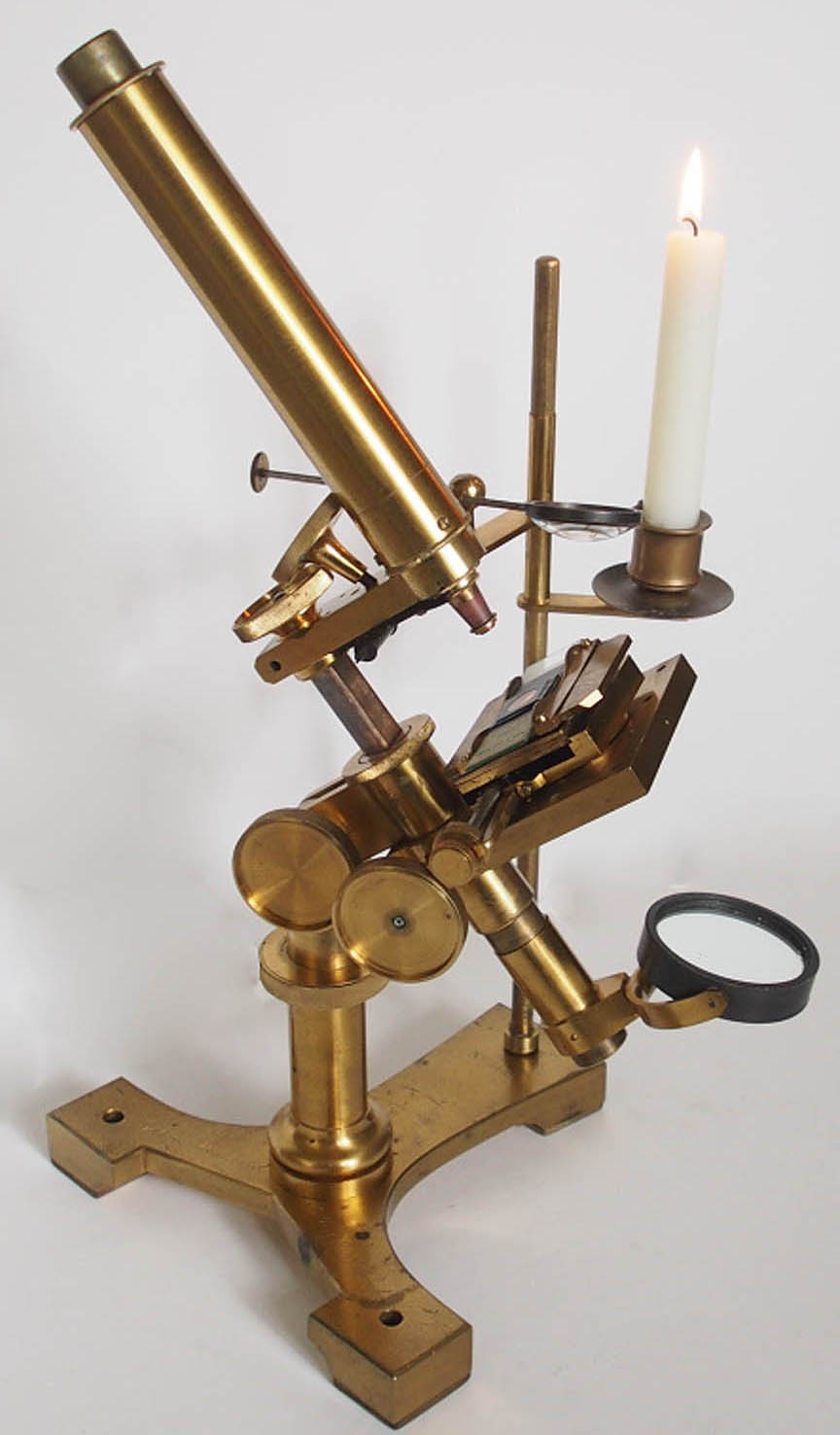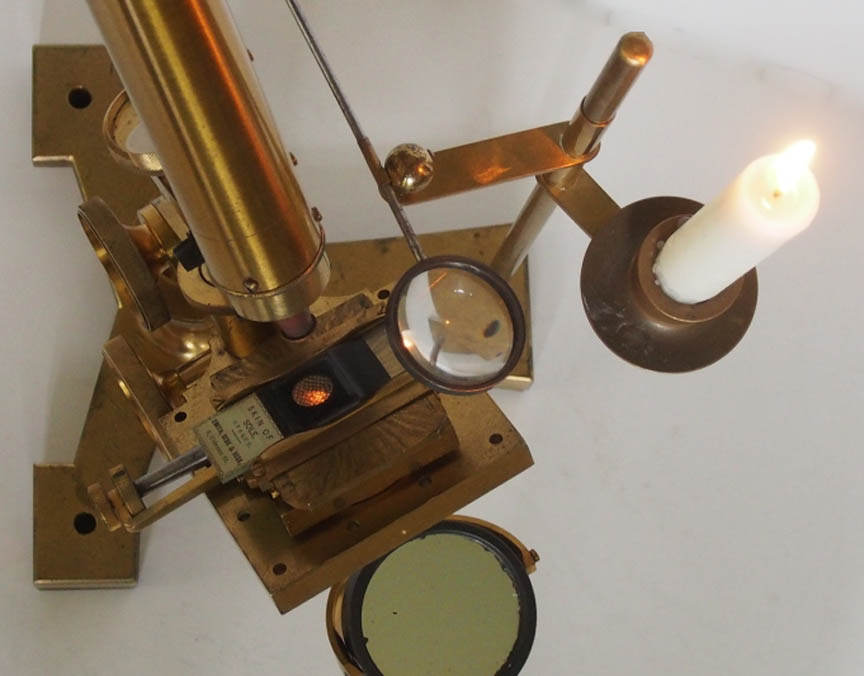HISTORY OF CANDLE LIGHT ILLUMINATION FOR MICROSCOPES
From the earliest days of the microscope, artificial illumination was common, particularly on cloudy days or at night. At the times of the first microscopes, candles and oil lamps were the earliest illuminants. Candles were at first made from tallow, an animal fat derivative which did not burn very brightly and gave off foul smelling fumes. Starting in the late 18th century, the first major change in candlemaking since the Middle Ages occurred, when spermaceti, a wax obtained(unfortunately) by crystallizing sperm whale oil, became available in quantity. The spermaceti wax did not elicit a repugnant odor when burned, and produced a significantly brighter light. These more expensive candles were bright enough to allow better use of the microscope by candle light.
Candles could be used on a separate stand designed to hold them, or a device using the microscope's own foot could form the base of the candle holder, as shown in the following images of a large Pritchard Engiscope
.
This shows the transmitted light arrangement from a different angle. As shown here, when a candle was used as the light source, a shade was often used to block the direct candle light from the eyes.

This image illustrates candle illumination utilizing transmitted light. The candle light is concentrated by a bullseye condenser onto a mirror which reflects the light up through the specimen.

These illustrations shows how the candle light and condenser were used to illuminate an opaque specimen from above. The mirror is not used in this arrangement.


The most common form of shade device, shown below, uses a paper or cloth "fan" that mounts atop a stand that breaks down into small parts, storing, in this instance, in a red leather-covered case.
Just in case you were wondering,nowadays most candles are made from paraffin wax, a byproduct of petroleum refining. Candles can also be made from beeswax, gel (a mixture of polymer and mineral oil), or some plant waxes like palm, carnuba etc.
 Another arrangement for use of a candle using transmitted light to observe objects in a glass vial(v) via a vial-holder(h).
Another arrangement for use of a candle using transmitted light to observe objects in a glass vial(v) via a vial-holder(h).

 Another arrangement for use of a candle using transmitted light to observe objects in a glass vial(v) via a vial-holder(h).
Another arrangement for use of a candle using transmitted light to observe objects in a glass vial(v) via a vial-holder(h).